Twelve months ago I was wasting time in a book shop browsing all the lovely maps when I picked up a tourist map of Chile. The instant I opened it, I new that this was a place I wanted to explore. The maze of channels and glaciers that riddled the west coast of Chile is a sea kayakers dream. I left the shop having purchased this map.
Folks chuckled when I told them of my new expedition plan. Comments like ‘aren’t there supposed to be steps inbetween a Mediterranean expedition and … well Patagonia’, but that was not going to stop me trying to make it happen.
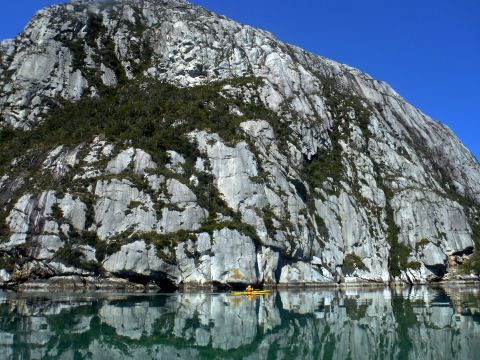
The research began and I spent many hours looking at the region of Chile called Patagonia. A place famously know for its wild beauty and harsh conditions. Most visitors aim for the mountains and numerous National Parks Chile has to offer but for me, I wanted to think outside the box. Sea kayaks are the perfect craft to allow us to explore deeper into the wilderness, we would be able travel into places that others may not normally be able to reach.
I was now determined that I could make this trip happen, all I needed was the drive to organise it. The next step would be to find a small team as eager to explore as me. They needn’t be ‘super hero’ paddlers, but just folks who are up for a real challenge and hold a strong love for sea kayaking. I emailed numerous friends, work colleges and even posted on websites that advertised expeditions. Interest in the adventure was high but what I really needed was some one to commit before planning could go any further.
Many weeks of searching and then literally over night two emails poped into my inbox. Mike Burnett a web designer who paddled around Sardinia with me the year before, had thought what the hell another trip sounds fun. Lee Franklin a club coach and oddly enough my old science teacher decided that adventures like these come once in a life time, and he was in too. Yes! A team of three would be ideal!
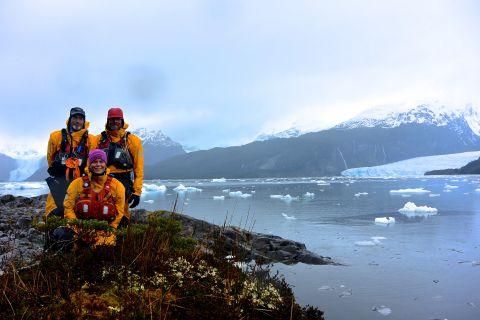
Flights were booked, ferries were negotiated as we had needed to get dropped off in the middle of nowhere, and boats were stressfully sorted (not an easy feat in Chile). The logistics took time, a lot of emails and phone calls, but people and companies were willing to adjust their normal procedures a little in order to help us make our expedition happen.
Planes, night buses and a three day long ferry finally got us to the tiny settlement of Puerto Eden. The only village that sits with in the 1,000 km stretch of total wilderness on the west coast of Patagonia. Reachable only by boat, this was a hardy little place.
Here we had to undergo a inspection from the Chilean Armada, this is required from all craft before being granted permission to set off. The paper work frenzy that we had been dreading turned out to be a breeze, thanks to our preparation and prior communication with the Port Captain.
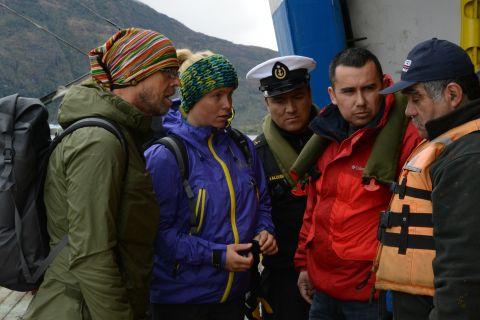
Nine months of dreaming, planing and organising had finally got us to this point. We over loaded our sea kayaks with fourty days worth of supplies and equipment, hoping that the boats would still float. With every paddle stoke we pulled ourselves deeper into the remoteness of Patagonia. Between Puerto Eden and our finish point Puerto Natales there stood 800 km of pure wilderness. There is no dening that paddling a sea kayaking through Patagonia’s most remote stretch of coastline is a pretty crazy idea, but it would be the biggest challenge we had ever set out to do. We had to be totally self sufficient, out here we were on our own!

The first few days we were nervous having read so much about the unpredictable weather and the world renowned ferocious winds. It took a little getting used to. We were greeted by blizzards and squalls, four seasons in one day was going to be a regular feature of our trip. We knew that to stay on track we had to paddle on average 30 km a day. Other wise we would eat into our precious reserve of ‘storm days’ when we could’t paddle due to conditions.
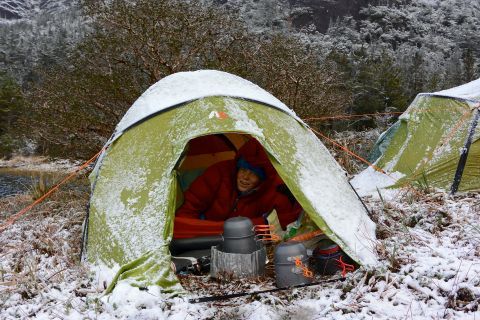
The ultimate goal of the trip was to explore the hidden glaciers of the west coast, icy gems that are rarely if at all visited. Pío XI was our first stop. A glacier five kilometres wide and one of the only ones left in the world that is still growing rather than receding. This beast was spectacular. The sun had shown its face just at the right moment for us to appreciate this river of ice in all its glory.

Dolphins and sea lions enjoyed the nutrient rich waters around us and we would watch their acrobatic shows daily. The miles began to disappear as we headed south. Our thoughts were now programmed to think on a day to day basis, as the total 800 km bigger picture was still too intimidating. We linked the numerous channels navigating off a 1:400,000 scale map, which was to say the least was little detail shy, but as this area is barely mapped we had very little else to go with.
The weather changed its moods as often as a toddler, they were sudden, and with no restraint. Hail, snow, wind and rain were broken by short and fairly rare blocks of warming sunshine. Inevitably everything began to get damp with the heavy and persistent rain. We lived in our Palm drysuits from the moment we got up, to the time we went to bed. They had become like our second skin and morale would have been hard to keep up without them.
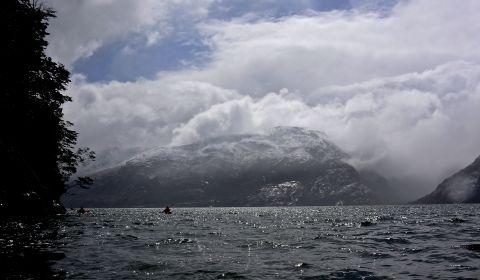
The routine of life becomes simple on expedition. You wake, you pack up, you paddle, and all you really think of is where you are, what the weather is doing and what ‘Trek and Eat’ meal you will have for dinner. A bubble forms around you, real life is almost completely forgotten. The regular day dreams of fresh food keep you tuned into the fact that this is not actually normal life and the ‘when I get to civilisation I am gona eat Pizza’ conversation, which seems to be permanently on repeat is the first sign that you are looking forward to the end.
By week three we were closing in on the crux of our expedition, Estro Peel. To get here we would need to make a large detour up a channel where the mountains steepen and the passage narrows. The very end of this channel is walled in by five huge glaciers, all flowing down from the Patagonian ice field that borders Argentina. This would require some real grit to get up to this point. The flow of water is almost constantly ebbing due to melt water and the ship sized icebergs choke up the narrow entrance to the final bowl where the glaciers reach the sea. No sail or power boat could reach this point but our nimble kayaks were agile enough to dodge through the mass of moving ice.
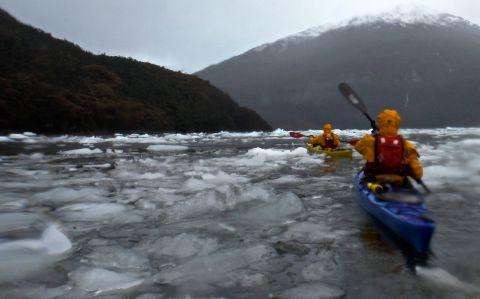
We were rewarded for our effort, the very top of Estro Peel was a breathtaking sight. Crammed with giant Ice burgs and steep glaciers, this place has an atmosphere like none other. The sound of these active rivers of ice was deafening. The thunderous rumbles and cracking kept us on our toes. Watching the huge lumps of ice falling made us feel insignificant and we knew that getting in the way of this natural show was not something we would survive in our tiny kayaks.
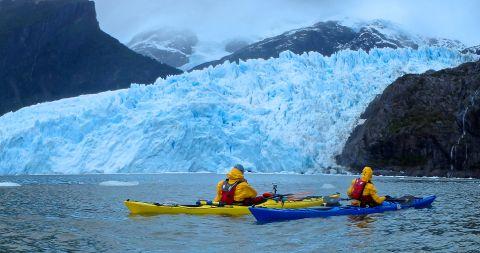
This place was special. I couldn’t help but wonder if many others had reached this point, this is what our adventure was all about. This moment was the summit of our trip, but like all summits it is only half way. We now had to paddle the 400km down to Puerto Natales.
Once back in the bigger channels we began to see signs of human life again. The odd fishing boat would make long diversions to see us, their friendly faces were a welcome addition to our days. One boat saved us from our very worrying low supply of fuel (we had run out of two days prior) and generously gave us a king crab for our dinner. This was our first fresh food in four weeks! It was the best crab I have ever tasted.
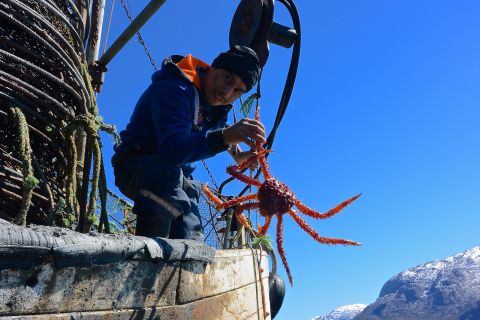
Although getting closer to the end, we still had a long way to go. The wind was a reminder of how committed we still were. For several days we braced our way further south more so than paddling with force 8-9 winds, riding the chop and surviving the gusts. These days went by with a flash and we gripped our paddles tightly for hours at a time.
Before we knew it we were rounding ‘Pizza Corner’ a name we had given to a 180 degree corner that was the final dog leg of our journey. We had now been on expedition for over four weeks. Our now saturated clothes and minimal food rations were a sign of how long we had been out in the wilds and a serious reminder that we still had limited time to complete our trip.
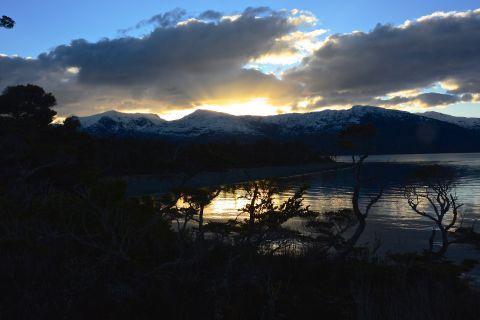
The last stretch across the Golfo to Puerto Natales seemed like a final reward. The the weather was calm, water mirror flat and the sky beautifully blue. The fishermen always waved with welcoming smiles as they past by and I couldn’t help but feel like the word must have been passed around about the crazy English kayakers.
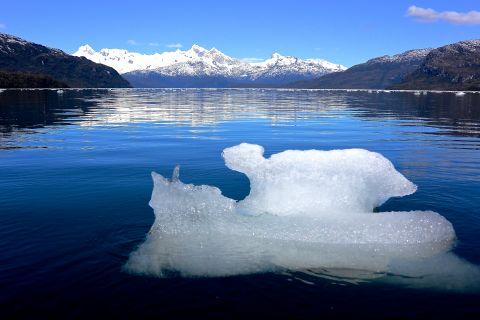
That last stretch where we could see Puerto Natales was so welcome, yet dreaded at the same time. I was ready to complete this mission but didn’t want it to be over. Success although hugely necessary, never really seemed possible until we could actually see the finish line. We had surprised our selves. Three normal people (if you can call our quirky little team that) had embark on a huge adventure. So many people had doubted such an expedition before I had left, yet we had actually done it.
I hope that maybe this article can inspire more people to pack there kayaks and go on their dream adventure. It’s not just for the epically hard core folk we read about in magazines to do, nevery day paddlers with a drive for adventure can do it too, you just have to go out and make it happen.
A big thanks to palm for keeping us warm and dry in the harshest conditions I have ever paddled in. Film coming soon ‘The Hidden Glaciers of Patagonia’ – Erin